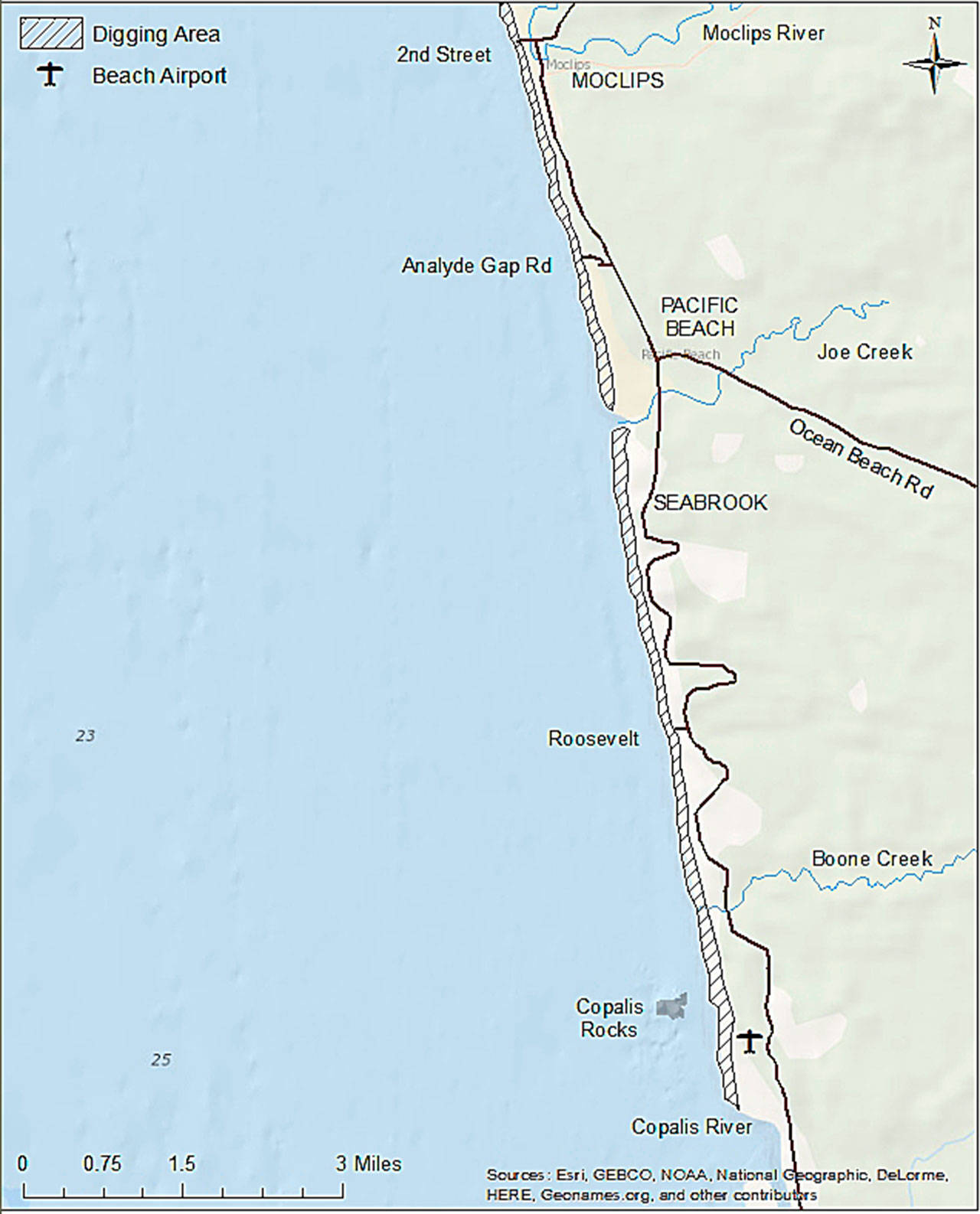For the first time this year, shellfish managers have approved two days of razor clam digging, Saturday and Monday at Mocrocks Beach only after marine toxin tests showed the clams are safe to eat.
The approved morning razor clam digs, along with low tides, are Saturday, May 15, 9:37 am, -0.5 feet; and Monday, May 17, 11:03 am, -0.1 feet. No digging is allowed after noon during digs when low tide occurs in the morning.
“After this long closure due to high levels of marine toxins, we are happy to open a dig this weekend,” said Dan Ayres, state Department of Fish and Wildlife coastal shellfish manager. “And, even though it is just one beach, we hope people will enjoy the opportunity responsibly.”
Mocrocks Beach runs from the Copalis River north to the south boundary of the Quinault Indian Reservation and is accessible from several approaches off State Route 109 in and around Moclips: Second Street in Moclips; Andalyde Road, off First Street and Homer Street in Pacific Beach; and the Roosevelt Beach approach south of Seabrook.
“Mocrocks beach only has three points of road access, so we are asking beachgoers to arrive early and exercise good judgment when accessing the beach,” said Ayres. “Under state law, all vehicles — and horses — are required to travel along the extreme upper limit of the hard sand. When in doubt, follow the path marked by multiple tire tracks.” Motorists who violate Washington state laws on beach driving can face a fine of $150, or much more for killing endangered seabirds, such as snowy plovers.
No other beaches are scheduled to open at this time; Fish and Wildlife will continue testing marine toxins in razor clams in conjunction with the state Department of Health, in order to determine whether additional digs can be scheduled before the end of May, the normal season end point.
“As always, we will not be looking for harvest opportunities after May 31,” said Ayres. “This provides razor clam populations the summer to spawn and then recover from spawning, insuring the future of this important resource.”
The agency continues to emphasize “digging while distancing” and masking up when near others to support efforts by community health experts to ensure a fun and safe razor clam season.
Beach maps, digging regulations and more information can be found at Fish and Wildlife’s razor clam page, wdfw.wa.gov/fishing/shellfishing-regulations/razor-clams.


